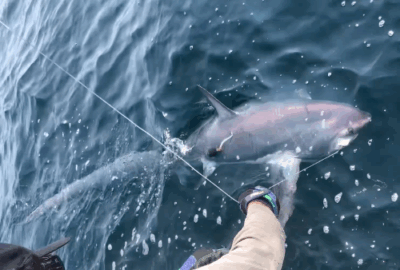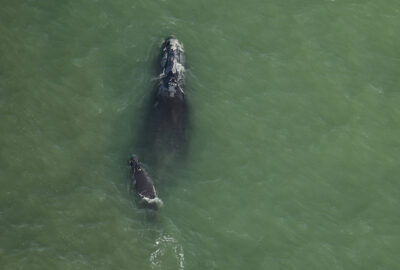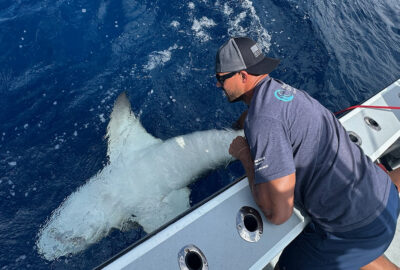Tagging False Albacore in Nantucket Sound
By New England Aquarium on Friday, April 07, 2023

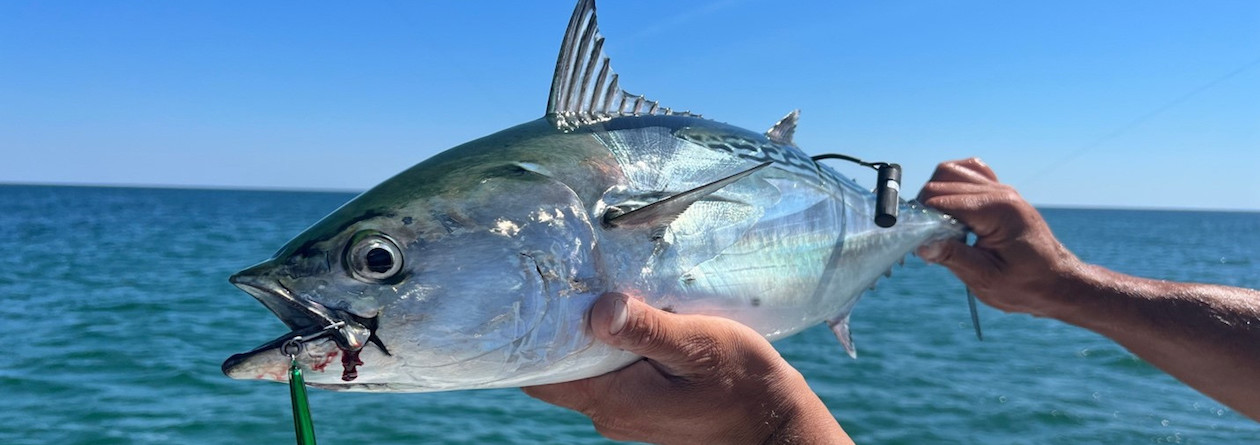
By Edward Kim, Caroline Collatos, and Jeff Kneebone
Look out at Nantucket Sound on any given day in the fall, and you might see a fleet of boats zig-zagging around chasing small, intermittent flurries of frothing surface water. Look closer with a set of binoculars, and you might spy a lucky few anglers hooked up, spinning rods bent over and drags peeling. The elusive target? False albacore (aka “albies”) the local name for a fish known in the scientific world as “little tunny.”
The recreational value of false albacore lies in their tackle-busting fights and accessibility to nearshore anglers when they migrate to the coast for a few short months in the fall. Yet while this miniature tuna supports a thriving, predominantly catch-and-release fishery from Massachusetts all the way to North Carolina, little is known about its life history, habitat, movements, and fishing-related mortality, and no regulations are in place for the species either at the state or federal level. Recent growing interest in proactive management to protect this resource while it is presumably still robust has raised the necessity for research that can inform any future measures, something that the American Saltwater Guides Association (ASGA) thought the New England Aquarium could help with.
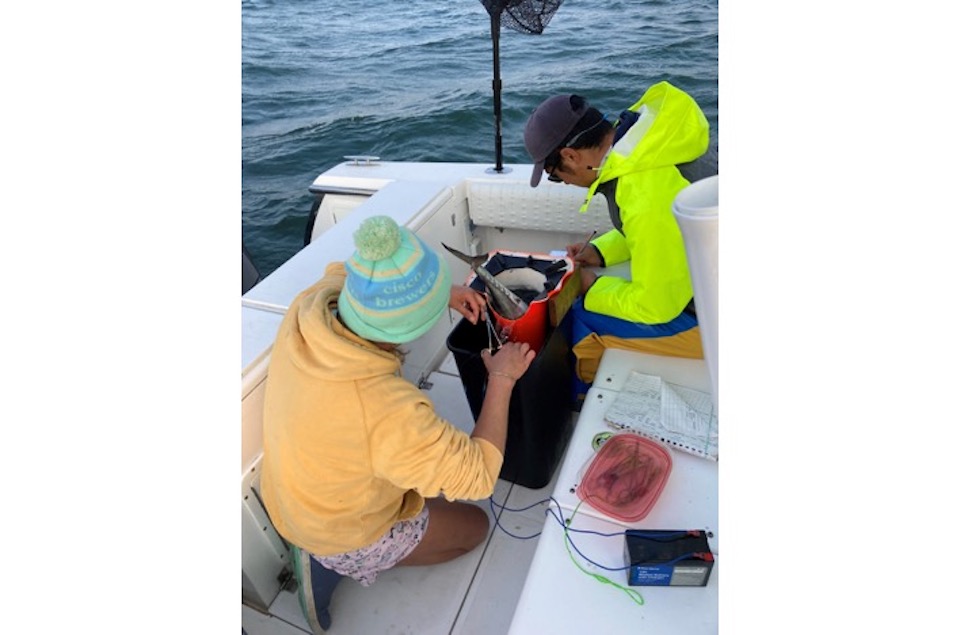

With the help of local captains partnered with the ASGA, we conducted a pilot tagging study in fall of 2022 using acoustic telemetry, the same technology we use to track sandbar and sand tiger sharks in New England waters. Pursuing albies with the same spinning setups and lures normally found on recreational charters, we tagged 63 individuals from mid-August to early October and tracked their movements with an array of 29 receivers positioned throughout Nantucket Sound and Nantucket Island. Amazingly, we eventually detected 57 of these tags, indicating that there is an excellent chance of survival for albies that are in good condition at the time of release.
Tagged false albacore definitely lived up to their reputation of being highly mobile by traveling all throughout the acoustic receiver array, often swimming from one side to the other over relatively short periods of time. Although they may not be spending much time in any one spot, repeated observation of the majority of tagged individuals over the course of the season indicates that Nantucket Sound as a whole is an important area used extensively during the brief time that albies are inshore. Additionally, while detections were recorded right up until removal of most of the array at the end of October, we did observe declining numbers of tags throughout the month that likely coincide with the migration of false albacore out of our waters. This should come as no surprise to anglers who are on the water frequently enough to observe their waning numbers as the days grow shorter and temperatures continue to cool.
Movement paths of the 57 tagged false albacore throughout the duration of the study. Black triangles represent receiver locations.
In the coming months, we’ll be taking a closer look at this data to see what else we can uncover about these fish. In the meantime, because the acoustic tags sport a battery life of about one year, they are still out there pinging, and we’re eager to see if any tagged fish return to the Nantucket Sound region this summer!
For more information about this project, check out these recent ASGA blogs and podcasts:
https://saltwaterguidesassociation.com/false-albacore-genetics-research/
https://saltwaterguidesassociation.com/exciting-albie-project-tagging-updates/

